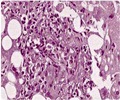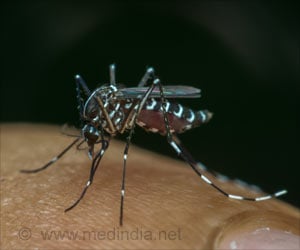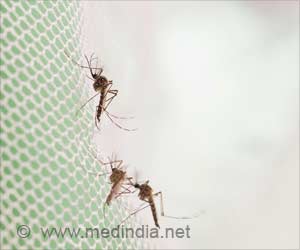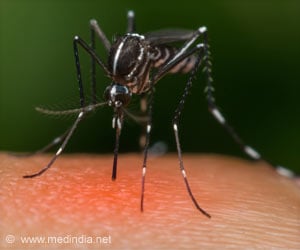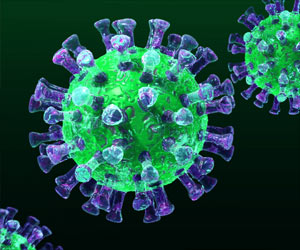A study in the August 26 issue of JAMA has revealed that infection with an antimicrobial-resistant strain of typhoid fever among patients in the United States is associated with international travel, especially to the Indian subcontinent. The study also shows an increase in certain strains of typhoid fever that are resistant to the most commonly used medications for treatment.
"Infection with Salmonella ser Typhi causes an estimated 20 million cases of typhoid fever and 200,000 deaths annually worldwide," the authors provide as background information. Typhoid fever is a rare disease in the United States with approximately 300 clinical cases reported each year. Improvements in municipal water and sewage treatments in the U.S. resulted in dramatic declines in the incidence of and deaths from typhoid fever at the beginning of the last century. The majority of the cases in the U.S. are now associated with foreign travel. "Over the last 20 years, emergence of S Typhi strains resistant to antimicrobial agents has complicated treatment of infected patients." In addition, the authors report that "identification of nalidixic acid-resistant S Typhi (NARST) and reports of infection with S Typhi strains resistant to ciprofloxacin from typhoid-endemic areas have generated concern that strains resistant to fluroquinolones may become more prevalent."Michael F. Lynch, M.D., M.P.H., and colleagues from the Centers for Disease Control and Prevention (CDC), Atlanta, reviewed data from 1999 to 2006 for 1,902 persons with typhoid fever who had epidemiologic information submitted to the CDC and 2,016 S Typhi isolates from public health laboratories sent to the CDC for antimicrobial susceptibility testing.
The median (midpoint) age of patients with typhoid fever was 22 years. The authors report that "1,295 (73 percent) were hospitalized and 3 (0.2 percent) died. Foreign travel within 30 days of illness was reported by 1,439 (79 percent). Only 58 travelers (5 percent) had received typhoid vaccine." Together, three countries accounted for more than two-thirds of all travel associated cases of typhoid fever—India (47 percent), Pakistan (10 percent) and Bangladesh (10 percent). Two-thirds of these travelers reported visiting friends and relatives as the primary reason for their travel, followed by tourism (9 percent) and business travel (3 percent), which was reported much less frequently. In addition, "272 (13 percent) of 2,016 isolates tested were resistant to ampicillin, chloramphenicol, and trimethoprim-sulfamethoxazole (multidrug-resistant S Typhi [MDRST]); 758 (38 percent) were resistant to nalidixic acid (nalidixic acid-resistant S Typhi [NARST]) and 734 NARST isolates (97 percent) had decreased susceptibility to ciprofloxacin. The proportion of NARST increased from 19 percent in 1999 to 54 percent in 2006."
"Patients with resistant infections were more likely to report travel to the Indian subcontinent: 85 percent of patients infected with MDRST and 94 percent with NARST traveled to the Indian subcontinent, while 44 percent of those with susceptible infections did," the authors write.
The authors conclude: "Since most typhoid fever among patients treated in the United States is acquired abroad, ongoing surveillance may also help track global patterns of antimicrobial resistance of S Typhi. Reducing the burden of typhoid fever in the United States will require increased attention to prevention measures by travelers, including improved vaccination coverage among travelers to typhoid-endemic areas," particularly among travelers visiting friends or family in India or its neighbors. "Further reductions in typhoid fever among travelers will depend on increased availability of safe drinking water as well as improved sanitation and food hygiene in typhoid endemic areas, measures that would go a long way toward reducing the global burden of typhoid fever."
Editor's Note: Please see the article for additional information, including other authors, author contributions and affiliations, financial disclosures, funding and support, etc.
Advertisement
"The article by Lynch and colleagues underscores the importance of travel in the global spread of S Typhi and, in particular, NARST isolates," writes Zulfiqar A. Bhutta, M.B., B.S., Ph.D., of Aga Khan University, Karachi, Pakistan and John Threlfall, B.Sc., Ph.D., of Health Protection Agency Centre for Infections, London, in an accompanying editorial. "The implications of these findings for global strategies for the prevention and control of typhoid are substantial for both developed and developing countries."
Advertisement
Source-Eurekalert
RAS








